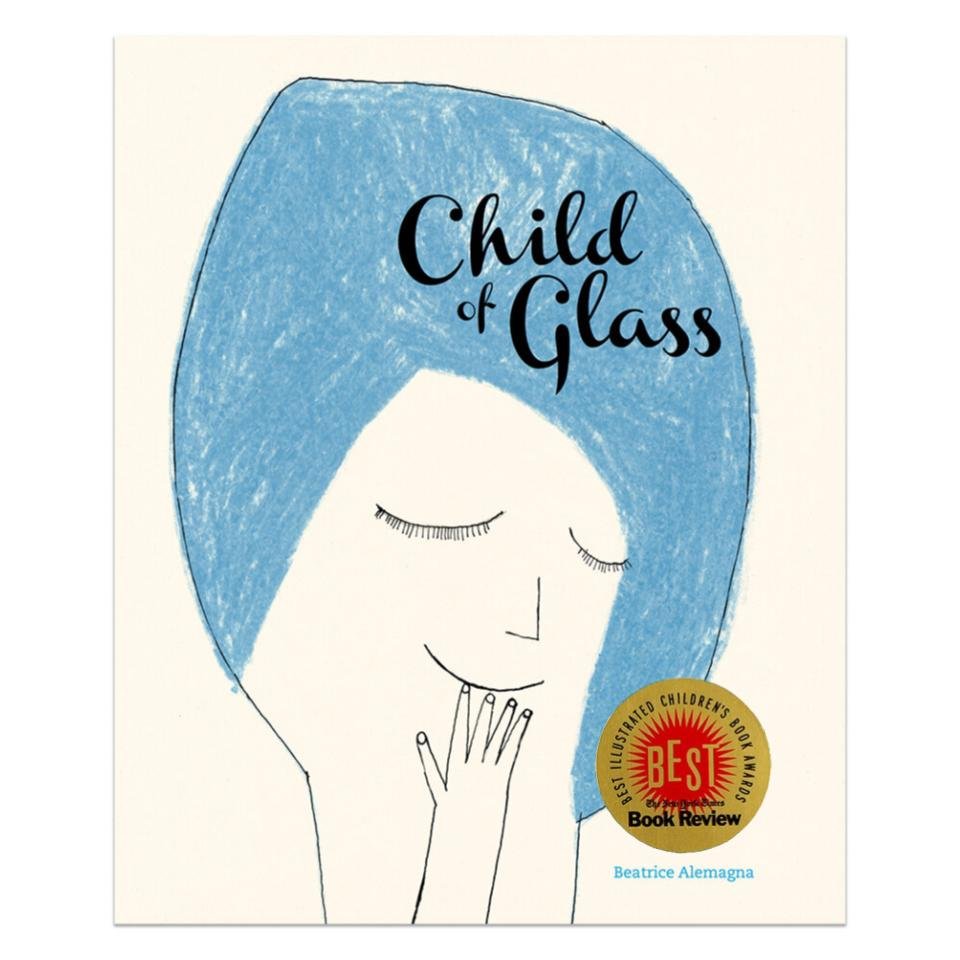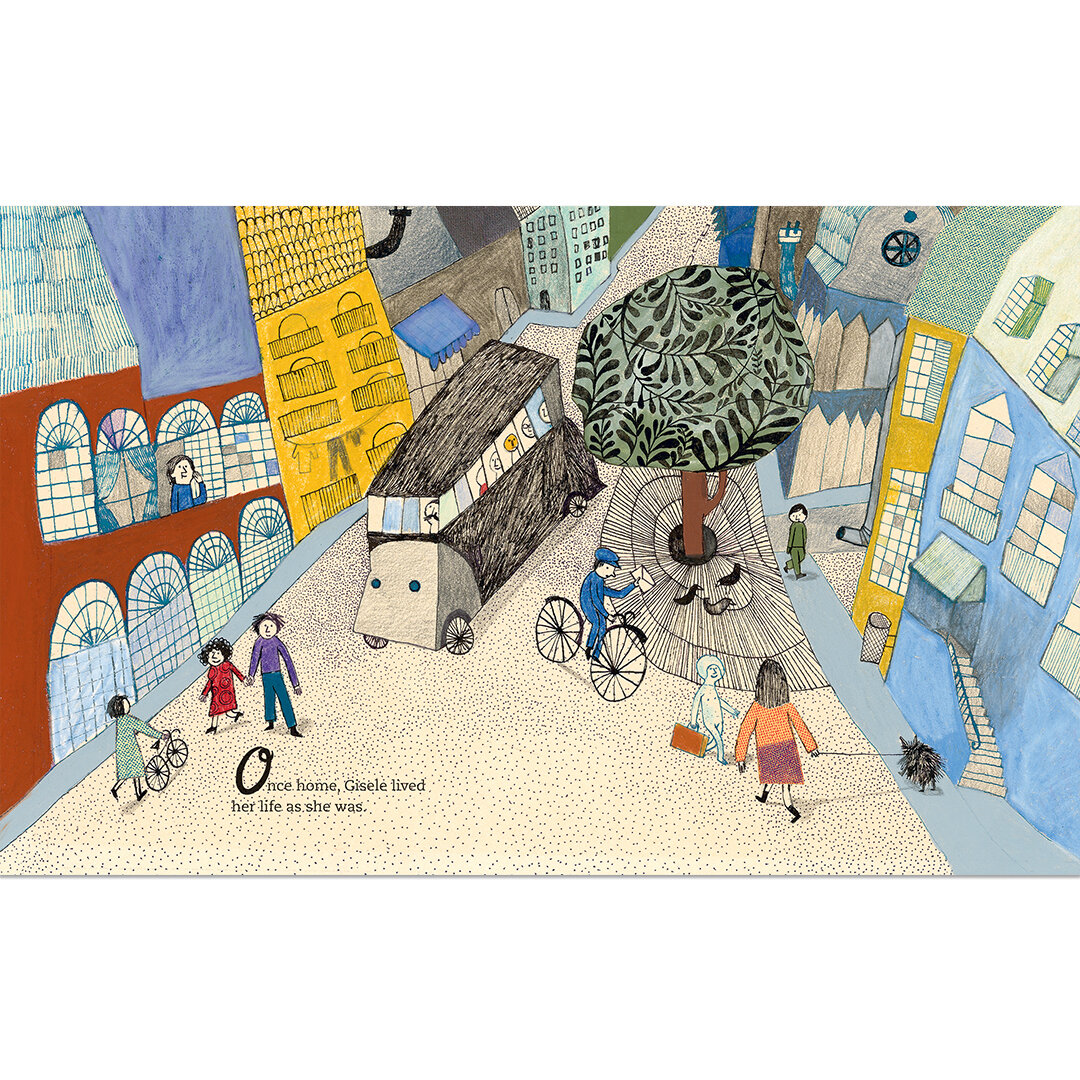Child of Glass




Child of Glass
This title is also available from Bookshop, a great initiative that supports local, independent bookstores.
Written and illustrated by Beatrice Alemagna
★ A New York Times/New York Public Library Best Illustrated Book of 2019
Child of Glass is about Gisele, a fragile, strong, transparent girl who denounces the meanness that can mark life in the world. In sparse, poetic language that all of us, however young or old, can understand, Child of Glass reminds us of our birthright to become ourselves. Freedom isn’t about accepting what is; it’s about asking the questions and taking the actions that allow us to be at home in the world.
A story about difference, exclusion, and ultimately self-acceptance, Child of Glass explores the interplay between inner and outer and the journey we have to go on to become ourselves.
ISBN: 978-1-59270-303-6
8" (W) x 10" (H) • 52 pages • HCJ
★ A New York Times/New York Public Library Best Illustrated Book of 2019
★ “Concept and form are mirrored in Beatrice Alemagna’s Child of Glass, as she uses both transparencies and traditional pages to tell the story of a fragile yet resilient girl. Alemagna’s layered and highly textured drawings create a powerful sense of fluidity between the interior and exterior worlds. To turn the pages of this book is to witness transformation in real time.” —New York Times/New York Public Library, Best Illustrated Children’s Books of 2019
★ “Life is hard for any child who is different—but for a child who is not only different but also transparent, enduring ridicule from others can be suffocating. Gisele was born transparent: she blends into the scenery around her and is such an anomaly that people come from far and wide to lay eyes on her. With her transparency, however, comes the fact that her thoughts, good and bad, are clearly visible to those around her. While this was helpful in her childhood, her thoughts become more complex and troubling as she ages. This alienates her from others who cast her aside, no matter where she goes. Ultimately, Gisele learns an important lesson and the trajectory of her life changes completely. Using an interesting mix of opaque and translucent pages, Gisele’s story is told both in words and images. Interestingly, Gisele is naked throughout the story while others around her are clothed, echoing the nakedness of her thoughts. The illustrations are created in a style of collage-abstraction, their varying colors and textures representing the world in a visually intriguing way. Though there is a moderate amount of text and some pages are devoid of words completely, the message the story sends will resonate deeply with readers of all ages. This book is a gentle introduction to the complexity of the internal human conflict of fitting in while also being true to oneself.” ―STARRED REVIEW, School Library Journal
“Readers, like the townspeople, might stare at Gisele’s flat features, her helmet-shaped head, and her nudity. But once they accept this fable’s premise, they quickly encounter wrenching, interesting questions about emotions, communication, public opinion, and acceptance. Both sensitive young people who broadcast their feelings and those who clutch their emotional cards tightly to their chests will reel at the overwhelming notion of having one’s inner world exposed, revealed for others to dissect, criticize, or coddle. ‘Aren’t you ashamed to show such awful things, Gisele?’ a monstrous, distorted crowd of clothed villagers sneers. Gisele’s pain, articulated by double-page spreads of her wide, pale blue face shedding a multifaceted crystal tear through powerful vellum page turns, will feel acute and familiar to adolescents. Will reach both small and older readers struggling to conceal, manage, and express complicated inner worlds.” —Kirkus Reviews
“Alemagna’s story grapples with the dilemma of living a sensitive, authentic public life amid scrutiny and expectation, and her artwork fuses textured collage elements and dreamy, surrealist touches: birds reach to embrace Gisele with human hands, and she cries a tear like a cut diamond. Most inventive are representations of Gisele’s transparent head in leaves of translucent vellum, each page turn penetrating deeper into her mind. Though Gisele survives intact, without breaking, the ordeals she undergoes are sobering and universal.” —Publishers Weekly
“A soulful meditation on how to live with our human fragility, [created] with great allegorical deftness and tenderness. … Here, the genius of the physical book steps in to magnify the sensitivity of the story with a syncopation of translucent and solid pages. Transparencies of Gisele’s face layer different mood-states. … The story resolves in a soulful reminder that there is no cure for our fragility — there is only the courage of not merely living with it but embracing it as a wellspring of the tenderness that makes life worth living.” —Brain Pickings
